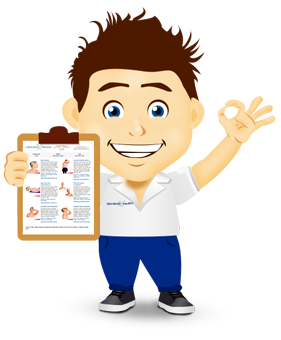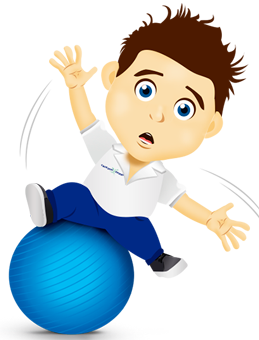
Next steps:
Feel free to read the advice sheet below! To get the full benefit click on 'Start treatment'. By starting the treatment you will get access to weekly rehab programmes online for FREE. You will be able to track your progress, pain levels and we will remind you to do your exercises every day!
Whiplash is a common injury that occurs within the neck from a sudden acceleration and deceleration force causing unrestrained, rapid movements backward and forward to the head and the neck, which is often from a car accident. Whiplash injuries are those that damage the soft tissues and the bone structures, while a whiplash associated disorder describes a more chronic and severe condition.
Thankfully, whiplash isn’t a life-threatening injury, but it can wind up leading to a prolonged period of disability. Even though the majority of individuals who are in a minor car accident will recover quickly without worrying about any chronic symptoms, there are some who will continue experiencing symptoms for years after the accident occurred.
Whiplash is commonly caused by a car accident where the individual is in a car that isn’t moving and they are struck by another car from behind. The rear impact causes the neck and head to be forced into a hyperextended position as the seat pushes the individual forward and the head and neck end up falling backward. After a small amount of time, the neck and head will recover and be thrown into a forward position.
Whiplash is commonly known as whiplash associated disorder because often it is not just the neck affected, but other areas. Most commonly the shoulder and back are affected with a whiplash. A common shoulder problem is known as shoulder impingement syndrome and it is unclear why this can occur following road traffic incidents, but doctors are aware that it can cause difficulty sleeping on the affected side, difficulty lifting your arm above your head, and reaching behind your back.
Whiplash and Whiplash Associated Disorder (WAD) Anatomy
Inside of the spinal column, there is a tube for the spinal cord. This thick bundle of nerves starts at the base of the brain. It relays information between the brain and the body. Nestled between the vertebrae are the discs. Each individual disc is attached to the bottom of the vertebra that lies above it and the top of the one below it. Muscles and strong ligaments keep the column together. All of the structures work together to surround, protect and support the spinal cord.

How to Treat Whiplash and Whiplash Associated Disorders:
1. Range of Movement Exercises
Patients who are involved in movement exercises early on have been shown to have a more reliable and quick improvement in their symptoms. Most of the time, this type of treatment involves rotational exercises done at a rate of 10 every hour. Don’t rush into the exercises, you want to wait until your symptoms allow you to do them. Often times, this is within the first four days after your accident occurred.
2. Physical Therapy
Physical therapy is often beneficial in strengthening the muscles and helping to reduce any painful movements. Occupational therapy is great at helping you return to your normal work environment.
3. Ice and Heat
Using ice and heat will help reduce inflammation. Your therapist will guide you on how long, and which to use, but in many cases 5-10 minutes of ice followed by 10-20 minutes of heat can help to reduce inflammation and reduce the pain. Make sure you wrap the modalities in a towel to prevent any burning, always be careful when using ice and heat as you may not realize you are causing a skin burn.
4. Rest and Recover
Some people choose to do nothing. In mild whiplashes, getting about your normal day-to-day activities and getting on with it is a perfectly acceptable form of recovery. If you chose this approach but things do not improve, make sure you take medical advice.
5. Electrotherapy and Acupuncture
Ultrasound, interferential, TENS and acupuncture can all help reduce muscle spasm and pain.
6. Reduce Stress
If your neck pain has become chronic, you need to look at other factors in your life that are affecting or contributing to your pain. Stress often goes to the neck. If you are having issues that are underlying this can prevent a full recovery and you need to address these issues. Often psychological therapy or cognitive behavioural therapy (CBT) can give significant improvements in symptoms. Do not ignore underlying stresses, distress, emotional problems, anger, depression or psychological traumas that might have happened in the past or the present.
7. Spinal Manipulation
If symptoms have extended beyond four weeks, you could consider spinal manipulation. An osteopath or chiropractor would typically perform an adjustment to the neck to improve spinal mobility. This form of treatment is stronger and can cause some tenderness for 2-3 days following the manipulation, but the results can give significant improvements.
Tips:
· Don’t immobilize the injured site. This causes the muscles to stiffen and slow the healing process down. If you do need to wear a neck collar, use it only for short term (24-48 hours) and remove it when symptoms start to improve. Remember you need to regain mobility to the neck.
· Get back to normal daily routine including your job as soon as you can. This has been shown to be beneficial in speeding up recovery.

